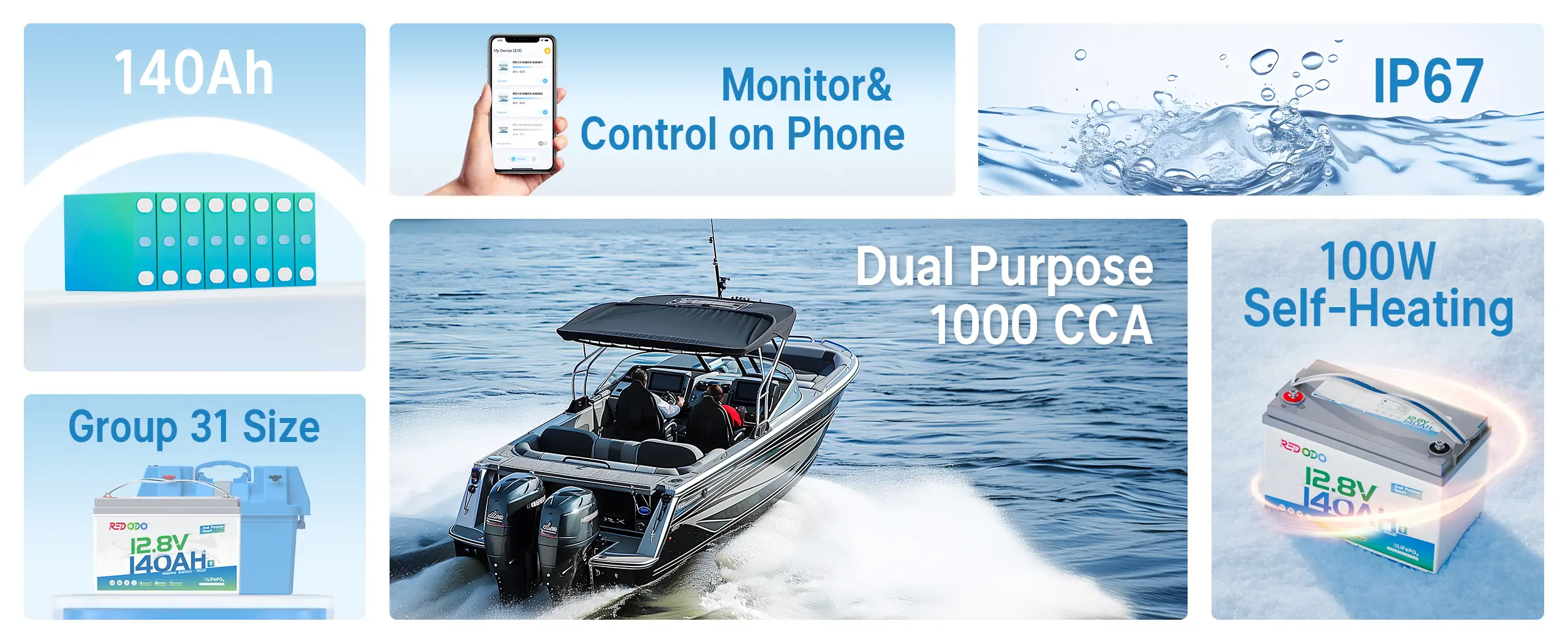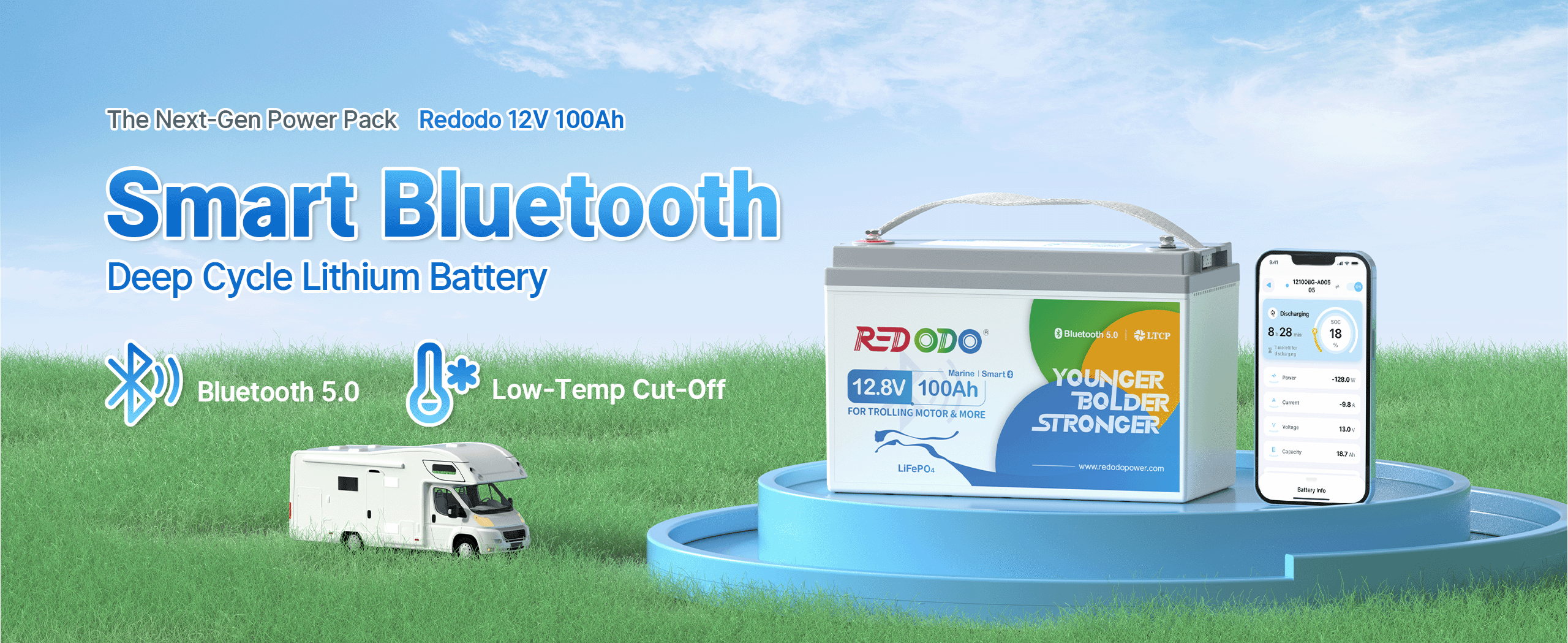When it comes to selecting the right battery for your vehicle, boat, or other applications, understanding the differences between battery groups is crucial. Two popular options are Group 27 and Group 31 batteries.
This article will delve into the key differences between Group 27 and Group 31 batteries and help you make an informed decision.
Table of Content
What is the Difference Between Group 31 and Group 27 Batteries?
Group 31 and Group 27 batteries are both popular types, but they differ in several key aspects, including size and dimensions, capacity, cold cranking amps (CCA), weight, applications, and cost.
Size and Dimensions
One of the most noticeable differences between Group 27 and Group 31 batteries is their size.
The Group 27 battery dimensions typically measure around 12.06 x 6.81 x 8.89 inches (L x W x H), making them more compact than Group 31 batteries's size, which are approximately 13 x 6.72 x 9.44 inches. These batteries dimensions are defined by BCI (Battery Council International).
They also defined subgroups for Group 27 and Group 31 battery dimensions, specifying variations in terminal positions, specialized applications, and capacity options beyond the standard size classifications.
Here is the chart of common BCI battery group sizes and features:
| BCI Group Types | Length (in) | Width (in) | Height (in) | Features |
|---|---|---|---|---|
| Group 27 | 12.06 | 6.81 | 8.86 | Standard size, top post terminals |
| 27R | 12.08 | 6.81 | 8.88 | Reverse terminal positions (+ on right) |
| 27F | 12.5 | 6.81 | 8.94 | Designed for Ford vehicles (+ on left) |
| 27H | 11.75 | 6.81 | 9.25 | High-capacity version, standard terminals |
| Group 31 | 13 | 6.72 | 9.44 | Standard size, top post terminals |
Capacity
Capacity, measured in ampere-hours (Ah), is a critical factor when comparing batteries.
Group 27 batteries generally offer a capacity ranging from 85 to 105 Ah, whereas Group 31 batteries can provide a capacity of 95 to 125 Ah. This higher capacity means that Group 31 batteries can deliver more power over a longer period, making them suitable for more demanding applications.
Cold Cranking Amps (For Starting)
Cold Cranking Amps (CCA) is a measure of a starting battery's ability to start an engine in cold temperatures.
For starting purposes rather than deep cycle purposes, Group 27 batteries typically have a CCA rating of 600 to 800, while Group 31 batteries can offer a CCA rating of 800 to 1000. The higher CCA rating of Group 31 batteries makes them more reliable in colder climates, ensuring your vehicle starts smoothly even in freezing conditions.
Redodo 12V 140Ah Group 31 Dual Purpose Marine Battery, 1000 CCA
Weight
A 12V lithium battery in Group 27 typically weighs 25 to 30 pounds, whereas Group 31 lithium batteries weigh around 30 to 35 pounds, significantly lighter than their lead-acid counterparts. This is a substantial reduction compared to their lead-acid counterparts, which can weigh between 50 to 70 pounds.
Applications
A Group 27 battery is a reliable choice for mid-sized vehicles, boats, and RVs, balancing size, capacity, and cycle life for versatile power needs.
On the other hand, a Group 31 deep cycle battery is commonly used in larger boats, RVs, commercial trucks, and high-performance marine applications, where higher capacity and deep cycling capability are essential.
Cost
The price difference between these two battery groups reflects their varying capacities and performance.
Group 27 deep cycle batteries generally cost between $150 to $300. In contrast, Group 31 batteries range from $200 to $450, as their higher capacity, longer lifespan, and enhanced durability in demanding conditions.
Comparison Chart of Group 27 vs. Group 31 Batteries
| Aspect | Group 27 Battery | Group 31 Battery |
|---|---|---|
| Size and Dimensions | 12.06 x 6.81 x 8.89 inches | 13 x 6.72 x 9.44 inches |
| Capacity | 85 to 105 Ah | 95 to 125 Ah |
| Cold Cranking Amps (CCA) | 600 to 800 CCA | 800 to 1000 CCA |
| Weight | 25 to 30 lbs | 30 to 35 lbs |
| Applications | Mid-sized vehicles, boats, RVs | Larger boats, RVs, commercial trucks, high-performance marine applications |
| Cost | $150 to $300 | $200 to $450 |
Choosing Between Group 27 and Group 31 Batteries
When selecting between Group 27 and Group 31 batteries, it’s essential to consider these factors:
Key Factors to Consider:
- Space and Size
- Power Requirements
- Weight Considerations
- Budget
- Application Needs
Choosing Group 27 Battery
If you need:
- A budget-friendly solution for moderate power needs.
- A lighter battery that’s easier to handle and install, especially in portable or weight-sensitive setups.
- Moderate power for applications like RVs, small to medium-sized boats, and backup power systems.
- A compact battery that fits in smaller or tighter spaces.
Choosing Group 31 Battery
If you need:
- Higher power capacity and longer reserve times for extended usage.
- A battery for heavy-duty applications like large boats, commercial trucks, and industrial equipment.
- A long-term investment in performance and reliability, even if the upfront cost is higher.
- To support extensive energy demands in off-grid renewable energy systems likes solar.

Group 31 Battery Recommendation
If you’re seeking unmatched performance and innovation, Redodo’s Group 31 battery with Bluetooth stands out. Here’s why:
Bluetooth 5.0 & Remote Control: The Bluetooth battery allows you to monitor battery status (capacity, voltage, cycle count) and manage power remotely via the Redodo App—perfect for effortless control in RVs, boats, or off-grid setups.
Low-Temperature Cut-off Protection: Safeguards your battery in freezing conditions (below 0°C), ensuring longevity for cold-weather adventures.
EV Grade-A LiFePO4 Cells: Delivers 4,000+ cycles and a lifespan 10x longer than lead-acid batteries, backed by a 1280W output for heavy-duty power needs.
Ready to upgrade? Redodo’s Group 31 Bluetooth Battery combines cutting-edge tech, durability, and user-friendly features to power your adventures. Visit Redodo today and experience the future of reliable energy!
Related Blog: Best Group 31 Trolling Motor & Deep Cycle Battery Review
Conclusion
Choosing between a Group 27 and Group 31 battery comes down to your specific power requirements, available space, and budget.
For smaller to moderate power needs, a Group 27 battery may suffice, providing a cost-effective solution for your RV, boat, or off-grid setup. However, if you're dealing with larger electrical demands or need longer-lasting power, a Group 31 battery is likely the better choice.
If you have any questions about Group 27 vs Group 31 battery, feel free to contact us by service@redodopower.com! Subscribe to our newsletter for more insights and tips on battery and getting exclusive 5% off.
FAQs on Group 27 and Group 31 Battery
Is a Bigger Group Size Battery Better?
Not always. A larger group size, such as Group 31, generally offers higher capacity (Ah), longer runtime, and greater power output compared to Group 27. However, bigger size does not always mean higher capacity, as different battery chemistries and designs can affect actual performance.
For example, some high-density Group 27 LiFePO4 batteries may have a similar or even higher capacity than Group 31 lead-acid batteries. The best choice depends on your power needs, available space, weight constraints, and budget rather than just size alone.
What Does 31 Mean on a Battery?
The number "31" in Group 31 refers to the battery's group size, which is a standardized classification based on its physical dimensions, terminal locations, and type. Group 31 batteries are larger and typically offer higher capacity and performance compared to smaller group sizes like Group 27.
What Happens If I Use the Wrong Group Size Battery?
Using the wrong battery group size can cause several issues:
- Fitment Issues – A battery that is too large may not fit in the designated tray, while a smaller one may move around, causing vibration damage.
- Insufficient Power – A lower-capacity battery may not meet the energy demands, leading to shorter runtime, frequent recharges, or failure to start engines.
- Overloading or Undersupplying Systems – An incorrect battery may strain electrical components, causing voltage instability or reduced efficiency.
- Connection Problems – Different group sizes may have incompatible terminal placements, making installation difficult or requiring modifications.
Read More:
Marine Battery Group Size Chart & Guide
Comparison of Group 24 VS Group 31 Deep Cycle Batteries
[Comprehensive Guide] Types of Marine Battery

Redodo

Redodo
Recent Post

Convert RV from Lead-Acid to Lithium Battery: A Complete Guide

How Long Will a 200Ah Battery Run an Air Conditioner?

A Full Review of Redodo 12V 140Ah Group 31 Deep Cycle Battery

How Much Does it Cost to Replace Golf Cart Batteries?



![⚡[$294 after Sign-Up] Redodo 12V 140Ah Group 31 Lithium Battery with Bluetooth | 40% More Capacity | For RV, Marine, Solar Home](http://www.redodopower.com/cdn/shop/files/Redodo_12V_140ah_bluetooth_battery_ee6d5fd1-5c7d-4b9a-90ab-d54d06b29a04.jpg?v=1742967763)
![⚡[$220 after Sign-Up] Redodo 12V 100Ah Group 31 Bluetooth Lithium Battery | Real-Time Battery Monitoring | For RV, Marine, Solar](http://www.redodopower.com/cdn/shop/files/redodo_12v_100ah_bluetooth.webp?v=1744698930)

![⚡[$248 after Sign-Up] Redodo 12V 100Ah Bluetooth Marine Battery | For Marine, Trolling Motors, RV](http://www.redodopower.com/cdn/shop/files/Redodo12V100AhOBMOutboardMotorLithiumMarineBattery.webp?v=1743584091)
![⚡[$239 after Sign-Up] Redodo 12V 100Ah Mini Bluetooth LiFePO4 Battery | For RV, Marine, Solar](http://www.redodopower.com/cdn/shop/files/12V100AhMiniSmartLiFePO4LithiumBatterywithBluetooth1.webp?v=1741251007)

![⚡[$220 after Sign-Up] Redodo 12V 100Ah LiFePO4 Lithium Battery | Best Budget | For RV, Solar, Trolling Motor](http://www.redodopower.com/cdn/shop/files/Redodo_12v_100ah_lithium_battery_b9015ddd-64b5-4be2-8c88-392f0bb4ab30.jpg?v=1742973160)

![⚡[$220 after Sign-Up] Redodo 12V 100Ah Lithium Trolling Motor Battery With Low Temp Protection](http://www.redodopower.com/cdn/shop/files/Redodo12V100Ahlow-tempbattery.webp?v=1738462317)